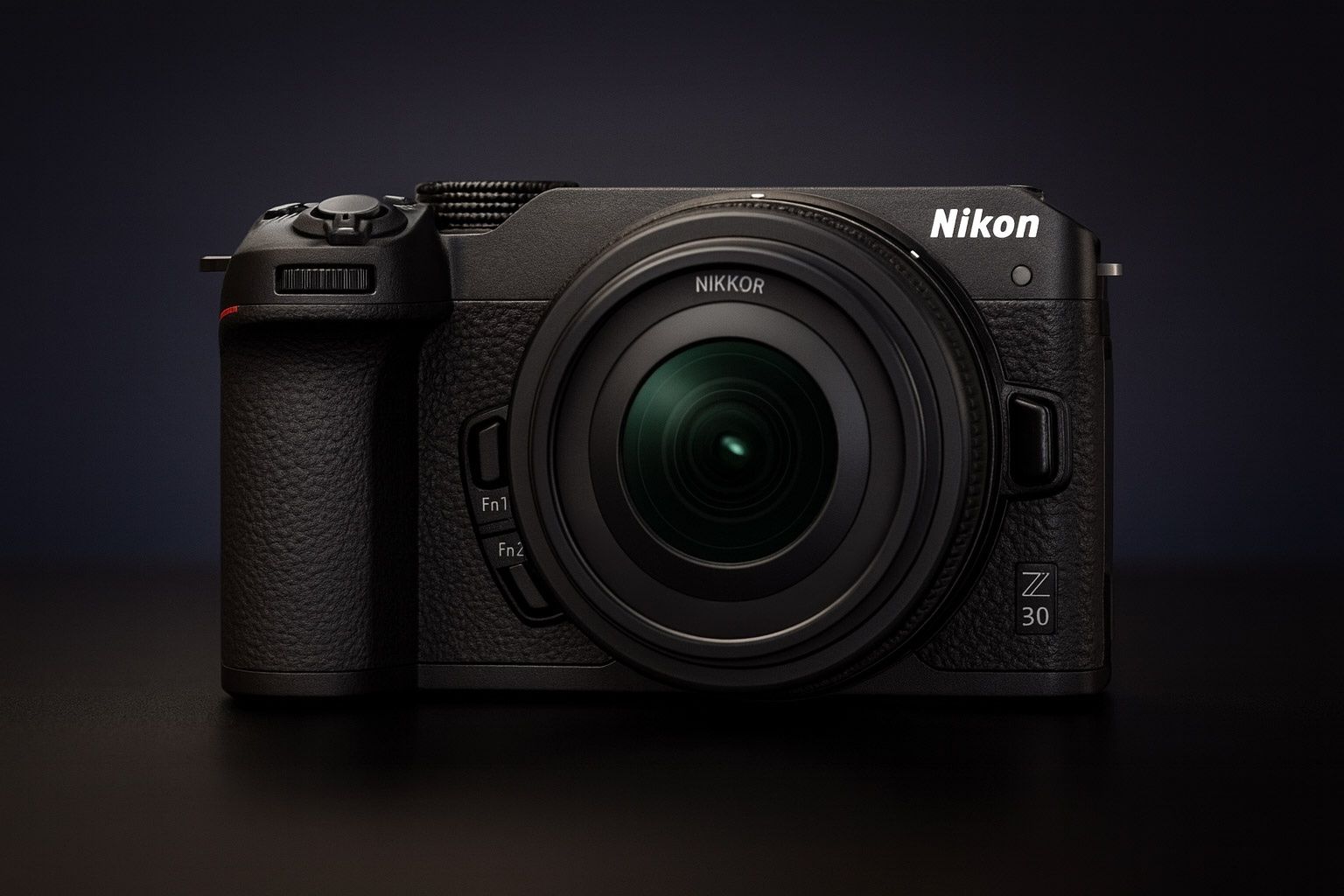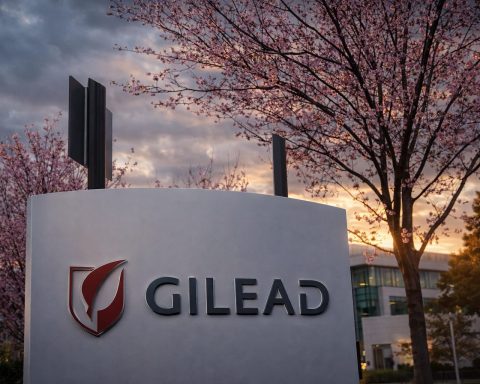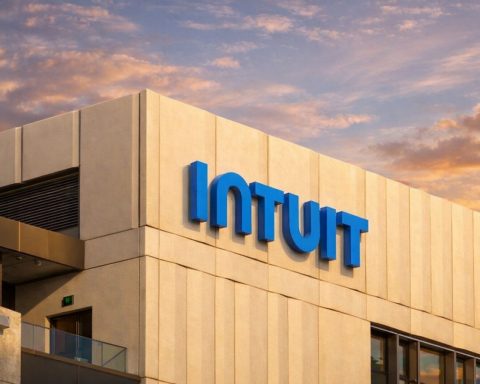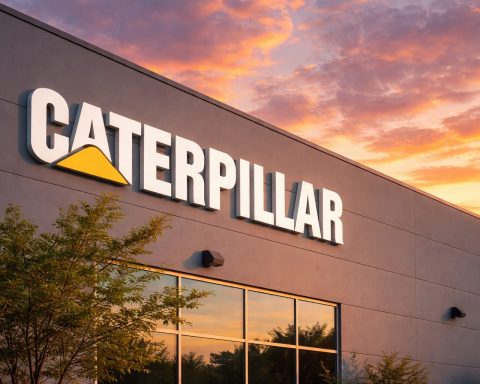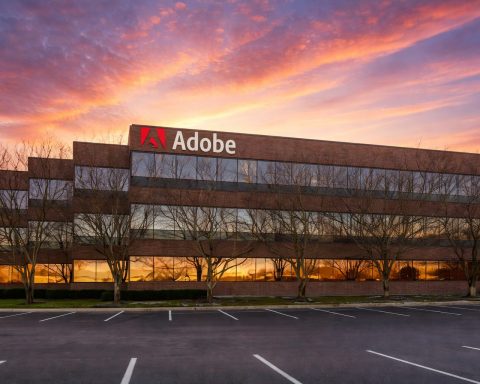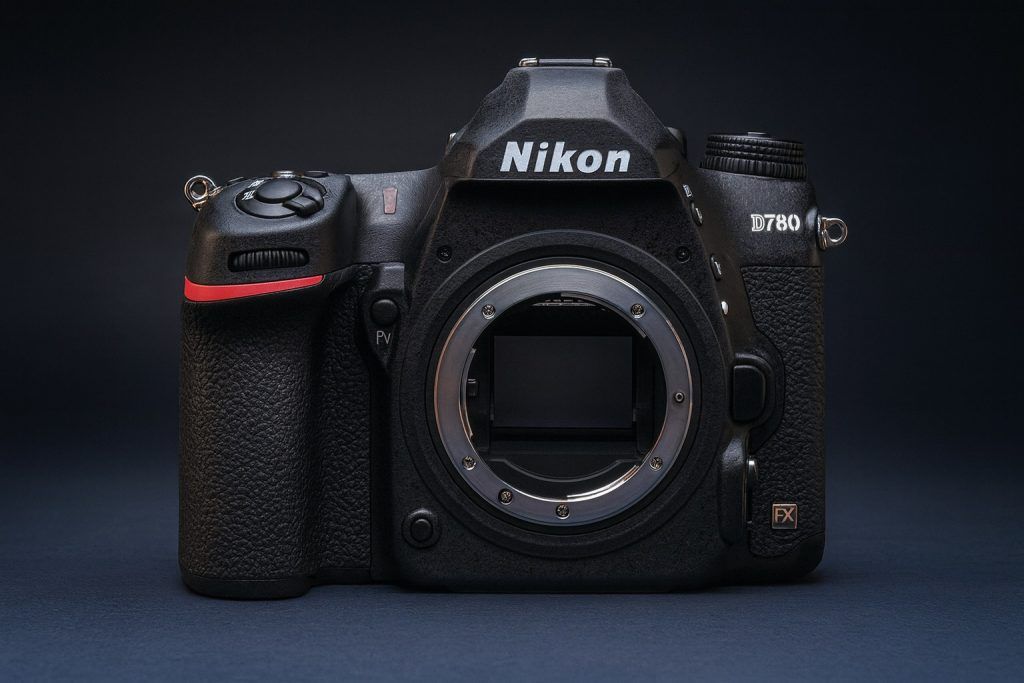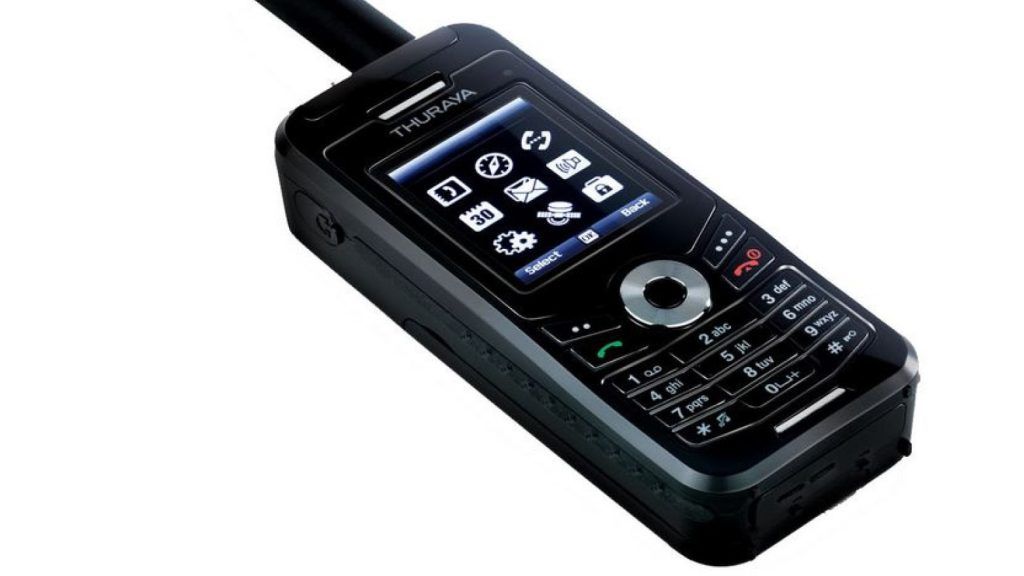- All three Nikon Z30, Z50, and Z fc share a 20.9MP DX sensor and Expeed 6 processor, with no in-body stabilization and a single UHS-I SD card slot.
- Each model offers 11 fps continuous shooting with AF/AE tracking and records 4K UHD at 30p and 1080p at 120p.
- The Z30 omits an EVF, uses a fully articulating rear touchscreen, supports USB-C power for long shoots, and can record continuously up to 125 minutes with no 30-minute limit.
- The Z50 includes an EVF and a 3.2-inch, 1.04M-dot tilting LCD, contributing to the strongest ergonomic handling among the three.
- The Z fc features a retro design with analog top dials, an EVF, and a fully articulating 3.0-inch screen for modern use.
- Weights in body only are approximately 405 g for the Z30, 450 g for the Z50, and 445 g for the Z fc.
- The Z50 II, announced in November 2024, adds EXPEED 7, 9-subject detection, 4K/60p (with crop), 10-bit N-Log, a fully articulating 3.2-inch screen, a brighter EVF, and the EN-EL25a battery.
- Launch pricing placed the Z30 at around $850 with kit, the Z50 at about $1,000, and the Z fc at about $1,100.
- Current street pricing (2025) commonly lists the Z30 kit around $650–$700, the Z50 kit around $850–$900, and the Z fc kit near $996–$1,036.
- Nikon’s DX strategy differentiates the trio by design and target user, with the Z50 II representing the high end of DX for now and rumors of Z30 II and Z fc II in 2026 but no confirmed Z70 or Z90.
Nikon’s trio of APS-C mirrorless cameras – the Z30, Z50, and Z fc – pack a punch in compact form. But which one is right for you? This comprehensive comparison breaks down specs, photo/video performance, design, usability, value, and real-world pros and cons of each model. We’ve distilled insights from expert reviews (DPReview, PetaPixel, Imaging Resource, Photography Life) and actual users, plus the latest pricing and availability. We’ll also peek at upcoming Nikon DX mirrorless news and rumors. Whether you’re a vlogger, hobbyist, or nostalgist, read on to see how the Z30, Z50, and Z fc stack up – and what’s next for Nikon’s APS-C Z-mount lineup.
Key Specs Comparison: Nikon Z30 vs Z50 vs Z fc
To start, here’s a side-by-side spec comparison of the Z30, Z50, and Z fc:
| Feature | Nikon Z30 | Nikon Z50 | Nikon Z fc |
|---|---|---|---|
| Sensor (MP) | 20.9MP APS-C CMOS (DX) [1] | 20.9MP APS-C CMOS (DX) [2] | 20.9MP APS-C CMOS (DX) [3] |
| Image Processor | Expeed 6 | Expeed 6 | Expeed 6 |
| Lens Mount | Nikon Z-mount (DX/FX compatible) | Nikon Z-mount | Nikon Z-mount |
| In-Body IS | No (lens VR only) | No (lens VR only) | No (lens VR only) |
| Viewfinder (EVF) | None [4] | 0.39″ 2.36M-dot OLED EVF [5] | 0.39″ 2.36M-dot OLED EVF [6] |
| Rear LCD | 3.0″ 1.04M-dot fully articulating (vari-angle) [7] | 3.2″ 1.04M-dot tilting (flip-down) [8] | 3.0″ 1.04M-dot fully articulating (vari-angle) [9] |
| Autofocus | 209-point hybrid AF; human/animal eye detect [10] | 209-point hybrid AF; eye AF (human only) [11] | 209-point hybrid AF; human/animal eye detect [12] |
| Continuous Shooting | Up to 11 fps (AE/AF) [13] | Up to 11 fps (AE/AF) [14] | Up to 11 fps (AE/AF) [15] |
| Video Max | 4K UHD up to 30p; 1080p up to 120p [16] | 4K UHD up to 30p; 1080p up to 120p [17] | 4K UHD up to 30p; 1080p up to 120p [18] |
| Memory Card | 1× SD (UHS-I) | 1× SD (UHS-I) | 1× SD (UHS-I) |
| Battery | EN-EL25 (~330 shots CIPA) | EN-EL25 (~300 shots) | EN-EL25 (~300 shots) |
| Weight (Body only) | ~405 g [19] | ~450 g [20] | ~445 g [21] |
| Launch Date | mid-2022 | late-2019 | mid-2021 |
| Launch Price(w/ kit) | $850 (16-50mm kit) [22] | $1000 (16-50mm kit) [23] | $1100 (16-50mm kit) [24] |
| Current Street Price(w/ kit) | ~$600-700 (often on sale) [25] | ~$900 (body ~$750) [26] | ~$1000 (often on sale for ~$999) [27] |
Table Notes: All three cameras use the same 20.9MP DX sensor and Expeed 6 processor, so base image quality is similar [28]. None have in-body stabilization (rely on optically stabilized VR lenses). The Z50 and Z fc include an EVF, whereas the video-oriented Z30 has none [29]. The Z30 and Z fc also share a fully-articulating vari-angle touchscreen, ideal for vlogging and selfies, while the Z50’s slightly larger screen only tilts (flips down) [30]. All can shoot 11 fps bursts and 4K/30p video (with no crop) plus 1080/120p slow-motion [31] [32]. Each uses a single UHS-I SD card slot and the same battery (good for ~300 shots per charge). Next, we’ll dive deeper into how these specs translate into real-world performance and user experience.
Sensor and Image Quality
All three cameras share an identical 20.9-megapixel APS-C sensor, so you can expect essentially the same image quality across the Z30, Z50, and Z fc [33]. This sensor has proven to be a solid performer: dynamic range is excellent for a crop sensor (you can lift shadows with minimal noise penalty) and high-ISO noise performance is competitive [34]. Photography Life noted the Z50 can capture “high-quality 4K videos with no cropping” and produces sharp 20.9MP stills despite its compact size [35].
Real-world tests confirm these cameras punch above their weight in image quality. PetaPixel’s reviewers found that photos from the Z30/Z50/Z fc are “pretty clear and vibrant… even in low light,” delivering clean results up to ISO 25,600 before noise becomes a factor [36] [37]. The JPEG colors out of camera are pleasing (typical Nikon color science), and the RAW files are flexible for post-processing [38]. In short, stills image quality is essentially a tie – all three will yield the same great photos given the same lens and settings. Any differences in your shots will come down to lighting, technique, and lenses, not the camera body.
Where the Z fc (and the newer firmware in the Z30) have a slight edge is low-light autofocus capability. Nikon tweaked the AF algorithms for the Z fc, giving it better low-light focusing down to -4.5 EV and adding Animal and People detection AF, which the original Z50 lacks [39] [40]. In practice, this means the Z fc and Z30 are a bit more confident at tracking eyes and faces (human or pet) in dim conditions, whereas the Z50’s AF – while still good – is the “half step behind” without the newer subject-detection modes [41]. That said, all three use a 209-point hybrid PDAF system that is fast and reliable for general shooting. Users report sharp, in-focus images in most situations, with the cameras able to lock onto subjects quickly.
Autofocus and Performance
On paper, the trio share the same 209-point autofocus module, but as noted, the Z30 and Z fc benefit from updated AF features. They can automatically detect and track human eyes and faces in both photos and video, plus animals(pets/wildlife) – making them very convenient for vloggers or pet owners [42] [43]. The older Z50 originally lacked the animal detect and only offered human eye-detect in photo mode, although firmware updates have improved it somewhat. Still, for the most advanced AF, the Z fc and Z30 inch ahead.
In everyday use, however, all three focus swiftly. PetaPixel observed the Z30’s autofocus was “incredibly impressive” and even “seems laser-focused on staying locked in on the person closest to the camera,” more tenacious in some cases than Nikon’s higher-end Z6/Z7 bodies [44]. That bodes well for all three, since they share the core AF system. Moving subjects, face tracking, and continuous AF during video are handled confidently by each model. Sports and wildlife shooters may crave something beyond 209 AF points, but for a mid-range APS-C camera, the AF performance is very good.
When it comes to speed, each can shoot up to 11 frames per second in continuous burst mode (with AF/AE tracking) [45]. In practice, this is plenty for catching action shots or fast candid moments. The limiting factor is the buffer and card speed: none of these models support faster UHS-II cards, and their buffers can fill after roughly 20–30 RAW images at 11 fps [46]. For example, testers note the Z fc can shoot ~22 RAW frames in a burst before slowing, and about 30–40 frames at a slower 5 fps before buffer limits kick in [47]. The Z50 and Z30 behave similarly. This means you get about 2 seconds of full-speed RAW burst shooting. For most casual action (kids, pets, street scenes) that’s adequate, but for extended sports sequences, it’s a limitation.
Another performance consideration is battery life. All three use the same Nikon EN-EL25 battery, rated around 300 shots per charge (CIPA) – fairly typical for small mirrorless. In real-world use, many users report getting a bit more (350+ shots) in a day’s mixed shooting. Video recording or extensive Wi-Fi use will drain batteries faster. Notably, the Z30 is optimized for longer video takes: it can record continuously for up to 125 minutes (over 2 hours) in one go, whereas the Z50/Z fc were limited to around 30-minute clips [48]. The Z30 also adds a handy USB-C power option, letting you run it off a power bank or AC adapter for marathon streams/recordings [49].
Video Capabilities
All three cameras have nearly identical video specs on paper: UHD 4K up to 30p (using the full sensor width, no crop) and 1080p Full HD up to 120p for slow-motion [50]. They can output clean HDMI video and support an external microphone via 3.5mm input. Nikon’s intent with the Z30 was to create a vlogger-friendly camera, but importantly, “in reality all three share the same video capabilities” [51] – you’re not getting a fundamentally different video image from one versus another.
That said, the Z30 is tuned for video creators. It omits the EVF entirely (which videographers don’t tend to use), has the fully-articulating screen for easy self-recording, and crucially removes the 30-minute clip limit – enabling those 2+ hour recordings for podcasts, events, or streaming. There’s even a front tally lamp on the Z30 so you know when it’s recording [52], and a dedicated mode switch to swap between photo and video modes quickly [53]. These little touches make the Z30 more convenient if video is your primary focus.
The Z50 and Z fc, on the other hand, are limited to the typical ~30 minute max per video file. They can certainly vlog or record high-quality 4K video just as well, but you may hit that time limit or find their ergonomics less optimized for solo shooting. For example, the Z50’s screen flips down under the camera – if you have it on a tripod or grip, the screen is blocked, making self-recording awkward. The Z fc’s vari-angle screen avoids that issue (it flips out to the side like the Z30’s screen), so the Z fc can work nicely for vlogging too.
None of these cameras include in-body stabilization (IBIS), which means for steady handheld video you’ll want to use lenses with VR (vibration reduction) or a gimbal. Nikon’s DX kit lenses (16-50mm and 50-250mm) do have optical VR and work well for smoothing out minor shake. Still, if you do a lot of walking footage, an IBIS-equipped camera (or gimbal) might be preferable.
In terms of video quality, the 4K footage is sharp and oversampled (the 20MP sensor outputs 6K downsampled to 4K), producing very detailed video with Nikon’s pleasing colors. There’s no 10-bit or flat log profile in these models (those features have arrived in the newer Z50 II – more on that later), so serious videographers may find the footage less flexible for heavy color grading. But for most creators putting content on YouTube or social media, the out-of-camera 8-bit 4K looks excellent. DPReview called the Z fc’s video “solid 4K and 1080p,” on par with competitors [54]. Rolling shutter is minimal in 4K, and autofocus during video is generally reliable at keeping faces or subjects in focus.
Audio-wise, all three have a stereo onboard microphone (sufficient for reference audio) and importantly a mic input for external microphones. None of them have a headphone jack for monitoring audio (the new Z50 II added one, but the original trio do not). So you might need to trust levels on-screen or use an external recorder for critical audio work.
Overall, if video is your main use, the Z30 edges out simply due to its unlimited recording time and selfie-friendly design. The Z fc is a close second with its vari-angle screen and stylish appeal (you’ll look good vlogging with it!). The Z50 can certainly deliver the same video quality, but its design is a bit less suited to life in front of the lens.
Design and Handling
Perhaps the biggest differences between these cameras are in their design, controls, and handling. Nikon effectively made “three technically near-identical cameras made very different by their designs and intended users” [55]. Let’s break it down:
The Nikon Z fc sports a distinctive retro design with analog dials, appealing to nostalgia lovers – but its slim body lacks a deep handgrip, affecting comfort with larger lenses. [56]
- Nikon Z50: The Z50 has a classic “mini-DSLR” design, with an integrated viewfinder hump and a deep handgrip. It’s the most ergonomic of the three for regular photography, as your fingers wrap around a proper grip and the shutter button and two command dials fall naturally under your index finger and thumb. Reviewers call the Z50’s handling “excellent… superb ergonomics” [57], noting it feels solid despite its small size. The top plate looks like a shrunken DSLR, complete with mode dial and even a pop-up flash (it’s the only one of the trio with a built-in flash). The Z50’s build is a mix of magnesium alloy and composite; it is weather-sealed to a degree, enough for some dust and light rain (though not fully weatherproof) [58]. If you value a practical, secure hold – especially with longer or heavier lenses – the Z50 is the winner in comfort and balance. As one user put it, “I feel very satisfied with this kit. It is almost perfect for me” for a lightweight yet solid camera [59].
- Nikon Z fc: The Z fc is Nikon’s throwback masterpiece, modeled after their classic FM2 film SLR. It’s beautifully retro, sporting round dials for shutter speed, ISO, and exposure compensation on the top plate, and a silver-and-black (or various vintage color) body with leather-textured grip. The analog controls give a tactile, fun shooting experience – “If you know what to expect, there should be plenty of joy in those dials,” noted one DPReview forum user [60]. This design turns heads and makes photography feel intentional and nostalgic. However, the form-factor has compromises: the Z fc “doesn’t have a built-in grip, which may make it uncomfortable with heavy lenses” [61]. It’s essentially a slim rectangular body; great for slipping into a bag, but not the easiest to hold one-handed. Many users add a small bolt-on grip accessory (e.g. SmallRig handgrip) to improve handling – a common refrain is that the Z fc “feels a little cheap, but handling is significantly improved by adding the grip” [62]. The Z fc does include an EVF (centrally located, like an old prism) with the same specs as the Z50’s. Its rear screen fully articulates, a modern touch amidst the retro styling. In use, the Z fc delights in feel and appearance, slowing you down just enough to enjoy shooting. But for rapid adjustments on the fly, the dedicated dials can be a bit fiddly – for instance, switching from 1/125 to 1/500 shutter speed requires a twist of the top dial instead of a quick flick of a command wheel. PetaPixel praised the Z fc as “absolutely gorgeous and relatively capable” but found the design “just isn’t very practical” for fast-paced shooting [63]. In their words, using the Z fc was “a mixed bag of ‘wow I love this retro camera’ and ‘goodness this is frustrating’” when trying to capture moments quickly [64].
- Nikon Z30: The Z30 is the newest and smallest of the bunch, with a design geared toward streamlined video and travel use. It looks like a mini rangefinder-style camera – no EVF hump at all, just a sleek flat top with a big record button. Despite its tiny size, Nikon managed to give it a decent front grip (coated in grippy rubber) that makes the camera secure in hand [65]. If you have larger hands, you might find your pinky dangling a bit, but overall the Z30 is comfortable to hold and super lightweight. Its control layout is pared down but familiar to Nikon users – no mode dial on top (it’s on the right shoulder), and a handy photo/video toggle switchby the viewfinder area to instantly swap modes [66]. The Z30’s lack of an EVF might be jarring to experienced photographers, but it helped keep the camera small and affordable for its target audience (vloggers coming from smartphones, who are used to composing on an LCD). Digital Camera World describes the Z30’s design aptly: “no-nonsense, practical design with a good grip – it’s smaller and lighter too, because it has no EVF” [67]. In essence, the Z30 is built to be carried everywhere – it’s the kind of camera you toss in a small bag or even a jacket pocket with a pancake lens. As a trade-off, shooting stills on a sunny day can be tougher (since you must use the rear screen to compose). But many users love the simplicity – one owner wrote, “I love my Z30 – it is what it is, and it’s very good at being just that! It knocks out decent video and pretty darn good stills with minimal effort.” [68] For casual shooting, travel, or family use, the Z30’s compactness and ease are huge pluses.
In terms of build quality, all three are well made but not pro-tier tank tough. The Z50 and Z fc have magnesium alloy frames and are assembled in Thailand; the Z30 is mostly polycarbonate. None are weather-sealed to the level of high-end bodies (no gasketed battery doors, etc.), though as noted the Z50/Z fc have some degree of dust/moisture resistance [69]. You’ll want to be a bit gentle in harsh conditions. Button feel and dials are decent on all; the Z fc’s retro dials are metal and feel solid, while the Z30/Z50’s controls are modern plastic but sturdy.
Winner (Design/Ergonomics): It depends on your priorities. If you want comfort and a traditional feel, the Z50 with its grip and EVF is the most practical shooter’s camera. If you crave style and classic controls, the Z fc is unrivaled – it makes you smile just to hold it (just be ready to adapt for comfort). And if you value portability and simplicity, the Z30’s minimalist approach is fantastic, especially for on-the-go video and travel.
Photo Performance and Real-World Pros/Cons
Beyond specs, how do these cameras fare in everyday photography? Here we compile some pros and cons of each model, incorporating expert observations and user experiences:
- Nikon Z30 – Pros: Incredibly compact and light, making it perfect for travel and vlogging. Despite the size, it has a comfy grip and very user-friendly controls – beginners appreciate the straightforward menu and the dedicated video features. Produces the same excellent image quality as its siblings, and its autofocus is fast and “laser-focused” on faces in video, ideal for content creators [70]. No 30-min video limit and a flip-out screen make it a vlogger’s dream on a budget. It’s also the most affordable option (often around $650 with kit lens) [71], so it’s a great value entry point into Nikon’s Z system.
- Nikon Z30 – Cons: Lack of an EVF is the biggest drawback for dedicated photographers – shooting in bright sunlight off the rear LCD can be challenging. Also, no EVF means holding the camera to your face for extra stability isn’t an option. There’s no built-in flash for quick fill light (you’d need an external unit). The body isn’t very rugged (not weather-sealed), and the battery life, while decent, will require spares for a full day of heavy use (especially video). Also, like the others, it has only one card slot and it’s UHS-I, so buffer clears are not lightning fast. But as one reviewer noted, the Z30 is “very good at being what it is” – a simple, video-centric shooter [72]. Its cons are mostly the flip side of its focused design.
- Nikon Z50 – Pros: A great all-rounder. Many photographers consider it the most versatile of the three for stills: it’s small enough for travel, yet has a solid grip, a viewfinder, and even a flash – so you’re prepared for almost any shooting scenario. DPReview lauded the Z50 as “a good, solid camera… with excellent build and ergonomics” and image quality on par with much pricier models [73]. It’s quick (11 fps bursts), and its 20.9MP sensordelivers vibrant images with Nikon’s renowned dynamic range. The Z50 also benefits from extensive Nikon DSLR heritage in its design – the controls and menu will feel familiar to Nikon shooters, and things like the grip and balance are just right. It’s been out a while, so it’s often discounted, making it a fantastic value (recently under $900 with lens) for the performance you get [74].
- Nikon Z50 – Cons: The main complaint is its tilting screen design. While great for waist-level shooting, the fact that it flips down for selfies is a pain if using a tripod or gimbal (the screen gets blocked). This limited articulating range is a con for video creators compared to the Z30/Z fc fully articulating screens. Also, out of the box the Z50’s AF lacks the animal detection that newer models have, so if you shoot pets or wildlife you might miss that (though human eye-AF works well for portraits). Its video features, while good, aren’t as fleshed out for creators – no built-in tally lamp, no headphone jack, and that 30-min limit. Buffer depth and single card slot can be limiting for fast shooters (e.g., sports). Lastly, as the oldest model, its future firmware updates may be sparse (Nikon’s attention has shifted to newer bodies). Still, the Z50 has stood the test of time as a “pleasing JPEG rendering, flexible RAW files” camera that’s just enjoyable to shoot with [75].
- Nikon Z fc – Pros: Style, style, style. The Z fc is a camera that inspires you to go out and shoot. Owners often mention how its retro looks and tactile dials make photography fun again. It’s also not just a pretty face – it’s essentially a Z50 internally, so it produces the same high-quality images and 4K video. In fact, it has a slight edge over the Z50: beyond the articulating screen, Nikon gave it 900-second (15 min) long exposure capability for night photography (vs 30 sec limit on Z50) and slightly improved low-light AF [76]. Photography Life notes these minor upgrades, showing Nikon intended the Z fc to be a fully capable camera, not just a fashion piece. The Z fc’s fully articulating screen and added eye-detect AF for video make it surprisingly good for vlogging or self-portraits, since you get the best of both worlds (retro stills camera + modern flip screen). It also has an EVF unlike the Z30, so you can compose shots in bright light through the finder. Many enthusiasts choose the Z fc as a second camera because it’s simply a joy to use and looks great on the shelf or in the field – a camera that sparks conversations.
- Nikon Z fc – Cons: The flip side of that retro design is ergonomics. As discussed, the lack of a substantial grip can make holding the Z fc feel less secure, especially with bigger lenses – an issue echoed by many reviewers: “lovely to look at but a little less easy to hold” without an add-on grip [77]. The classic control layout also means no mode dial (you select modes via a switch and use the shutter/ISO dials), which can confuse newcomers or feel slow under pressure. For fast action or quick setting changes, the Z fc is not as nimble; you might miss shots while dialing in a new shutter speed as compared to using command wheels on the Z50. Build-wise, the Z fc, while partially magnesium, has some slightly plasticky feel – PetaPixel bluntly said “in the hand it actually feels somewhat cheap – like a toy” compared to the expectation set by its looks [78]. It’s also not fully weather-sealed, so you have to treat it more gently outdoors. Battery life and single card slot are the same limitations as the others. Finally, it’s the priciest of the three (usually around $1000 with lens) due to the boutique design – you pay a premium for the retro flair, though recent sales have brought it under $900 in some cases [79]. For many, that trade-off in cost vs. uniqueness is worth it, but purely budget-conscious shoppers might lean to the Z50 or Z30 instead.
In summary, all three cameras are very capable of producing wonderful images and videos. The “pros” you get with one model tend to correspond to the “cons” of another – it really comes down to what features you personally value most in real use.
Value and Current Pricing
Nikon’s strategy with these APS-C models was clearly to target different niches and price points. At launch, the Z30 debuted as the cheapest (around $850 with kit lens) [80], undercutting the Z50 (roughly $1,000 kit) and Z fc (~$1,100 kit) despite having the newest tech. “We think Nikon has played it this way on purpose,” wrote DigitalCameraWorld, pointing out that for vlogging newbies the Z30’s lower price makes it almost a no-brainer [81]. Indeed, why pay more if that camera has everything you need? That was Nikon’s bet to lure content creators on a budget.
Today (2025), the prices have shifted a bit with discounts, but the relative positioning remains. The Z30 can frequently be found on sale – for example, it dropped to a record low of about $596 with kit lens in recent deals [82]. As of writing, its regular street price is around $650–700 (with the 16-50mm lens) [83]. That is fantastic value for a modern 4K-capable ILC. The Z50, being older, is often bundled or discounted too. It’s about $750 body-only or $850–900 with the 16-50mm in mid-2025 [84]. Considering it launched at $1000, that’s a nice savings – and you’re still getting a very well-rounded camera. The Z fc, due to its enduring popularity and fashion status, has seen smaller dips. It originally retailed around $1100 with lens, and you can now snag it for about $950–1000 on a good day [85]. In early 2025 it hit a low of $996 in the U.S. for the kit [86], and around £900 in the UK, which was its lowest ever. Currently, B&H lists the Z fc kit at $1,036 (with a small instant rebate) [87], and interestingly charges a $100 premium for the special edition colors (like amber brown, mint green, etc.) while the standard silver/black or all-black versions are base price [88].
When evaluating value for money, consider what you need in your kit. If you don’t care about an EVF or the retro styling, the Z30 gives you 95% of the performance at the lowest cost. It’s arguably one of the best bang-for-buck mirrorless cameras for beginners right now. If you want the EVF and better handling, the extra ~$200 for the Z50 is absolutely worth it – you’re still undercutting many competitors (Canon’s EOS R10, Fujifilm X-S10, etc.) in price. The Z fc asks a bit of a premium for style – you’re paying for form as well as function. But for many, that emotional satisfaction and the joy of use justify the cost. It’s also worth noting that resale value on the Z fc might hold up better; it appeals as a collector’s piece. The Z50 and Z30, while excellent tools, are more utilitarian in looks.
In terms of kits and lens value: All three often come with the Nikkor Z DX 16-50mm f/3.5-6.3 VR lens. That lens is actually a strong kit lens – very compact (it collapses flat), with optical stabilization and respectable sharpness. Many reviews praise it as a “sharp and very lightweight” companion [89]. So whichever camera you choose, starting with the 16-50mm kit is a good idea unless you already have specific lenses. Nikon also has a DX 50-250mm telephotothat is lightweight and a great pairing for outdoor photography (often offered in a two-lens kit bundle). One user pointed out that the Z DX lenses like the 16-50 and 50-250 “are really very good and very lightweight too,” which complements the whole ethos of these cameras [90]. There’s also a new 24mm f/1.7 DX prime and the popular 35mm and 50mm f/1.8 full-frame primes which work great on DX for low-light and portraits.
At the time of purchase, check reliable retailers like B&H, Adorama, or Amazon for bundle deals. (For instance, B&H often has a “Creators Kit” for Z30 including a small tripod grip and mic, or holiday discounts on the Z50 two-lens kit.) Always compare, as prices fluctuate.
Overall, Nikon has made sure all three models offer good value – just targeted at different users. As one review concluded, “For video-first content creators, the Z30 makes the most sense… But if you want a camera with a splash of style, the Z fc is great to shoot with and beautiful to look at. And for a no-nonsense hybrid shooter, the oldest Z50 is still a practical workhorse.” [91] [92] Each model fills its niche without breaking the bank.
Latest News and Rumors: The Future of Nikon APS-C Mirrorless
Nikon’s APS-C Z-mount line saw its latest refresh with the launch of the Nikon Z50 II in late 2024 – a second-generation update to the Z50. This new model (sometimes written as Z50II) indicates Nikon’s commitment to the DX format, and it brings some significant upgrades.
Nikon Z50 II: Announced in November 2024, the Z50 II keeps the same 20.9MP sensor but adds the powerful EXPEED 7 processor (the same generation used in the flagship Z9). Nikon claims this dramatically improves performance, enabling features like 3D Tracking AF and better subject detection modes [93]. Indeed, the Z50 II boasts ninesubject detect types (people, animals, vehicles, etc.), far beyond the original’s capabilities [94]. Continuous shooting also got a boost: it can now shoot up to 30 fps (JPEG/electronic shutter) or 11 fps RAW with the mechanical shutter [95], and even offers a pre-buffer capture mode that records images up to a second before you fully press the shutter (so you don’t miss critical moments) [96]. For videographers, the Z50 II is a leap – it can do 4K up to 60p (with a 1.5x crop at 60p) and supports 10-bit N-Log and HLG recording internally for greater color grading flexibility [97] [98]. Nikon also finally added a headphone jack alongside the mic jack for better audio monitoring [99]. Other refinements include a fully articulating 3.2″ screen (no more flip-down design), a brighter 2360k-dot EVF (1000 nits, twice as bright as before) [100], and even a new EN-EL25a battery with slightly higher capacity for longer video shooting [101]. Essentially, the Z50 II addresses many wish-list items: it’s a more robust hybrid camera now. PetaPixel summed it up saying Nikon “dramatically enhances video capability including 10-bit capture” and targets the Z50 II toward “hybrid creators” who want a do-it-all camera in a small package [102] [103].
For fans of the original trio, the Z50 II is exciting – but it also overlaps heavily with the Z30/Z fc in features now. It’s as if Nikon took the best of each and rolled them into one camera. The Z50 II is expected to gradually replace the Z50 (original) in Nikon’s lineup. Current pricing for Z50 II (body) is around $1000, and about $1200 with a kit lens, putting it a notch above the first-gen models. It’s essentially a step-up option for enthusiasts who want those added features.
What about a high-end APS-C, a true D500 replacement in mirrorless form? Photographers have speculated about a possible Nikon Z70 or Z90 – a pro-grade DX body with a faster sensor, more rugged build, perhaps even dual card slots. So far, Nikon has been quiet. In fact, the well-known rumor site NikonRumors poured cold water on many of those wild rumors, noting there is “no reliable rumor so far” on models like Z80 or Z90 – many such reports were “made-up… clickbait” with no solid info [104] [105]. As of early 2025, NikonRumors’ guidance was that we shouldn’t expect a high-end DX body imminently. They suggest Nikon is likely focusing its R&D on full-frame and that any “Z90” is not anytime soon [106]. Instead, they mention we will eventually get replacements for the Z30 and Z fc (perhaps a Z30 II and Z fc II in 2026), continuing the mid-range line [107].
Industry commentators like Thom Hogan have also weighed in. In a November 2024 analysis, Hogan pointed out that with the Z50II bringing much of Nikon’s latest tech (EXPEED7, advanced AF) into DX, the case for an even higher-end DX model becomes narrow. A hypothetical “Z70/Z90” would need “a new (and very fast) sensor with more pixels” (to compete with Canon’s 32MP EOS R7 or Fuji’s 26MP stacked X-H2S), plus IBIS stabilization, dual card slots, and other pro features [108] [109]. Developing such a sensor and body would be costly, and Nikon may doubt the sales volume to justify it – especially when many serious users might just jump to full-frame (where Nikon offers the Z8, Z9, etc.). Hogan’s prediction: “the Z50II is the top-end of DX for the foreseeable future.” Nikon appears to be minimizing DX-specific development (all current DX models share sensors and parts), so unless market demand shifts, we might not see a D500-like mirrorless soon [110]. This suggests Nikon’s APS-C strategy is to cater to entry and mid-level users, and steer pros toward affordable full-frame options like the Z6/Z7 series for high performance.
On the more optimistic side, Nikon has surprised us before. They did introduce the Z fc (retro DX) which no one predicted, and the new full-frame retro Nikon Zf (rumored as of 2023–2024) shows Nikon is willing to explore niche concepts. It’s possible that if Canon and Sony find success in the high-end crop-sensor space (Canon EOS R7, Fuji’s continued APS-C pro line), Nikon could eventually respond. Some enthusiasts hold out hope for a future “Z90” that could be a mirrorless D500, potentially with around 24–26MP stacked sensor for fast readout and 20fps+ bursts, rugged build, and an integrated grip – essentially a wildlife photographer’s dream DX body. But again, this is speculative. No credible leaks have emerged about such a camera as of mid-2025, so it’s not something to bank on in the near term.
In the meantime, Nikon seems content expanding the lens lineup for existing DX users (with a recent 12-28mm wide zoom and 24mm prime for DX, and more rumored). And of course, Nikon’s focus has also been on high-end FX (like the flagship Z9 and upcoming Z9 Mark II, Z8 II, etc., which are beyond our scope here).
Bottom line: If you’re investing in Nikon’s APS-C mirrorless system now, the current models (Z30, Z50 II, Z fc) are what you’ve got, and they’re quite mature and capable. Upcoming DX camera news is relatively quiet aside from the Z50II’s release. Keep an eye on Nikon in late 2025 or 2026 for any hint of a Z30II (which could add that EVF or other tweaks) or a Z fc II (perhaps with IBIS or an updated sensor?). Until then, the existing lineup covers a lot of ground. As Thom Hogan aptly said, Nikon appears to be “sticking with their original plans… no high-end model; they want to push users to FX for that” [111]. So the Z50II is likely the most advanced DX we’ll see for a while, and it is quite a capable little camera in its own right – arguably now the DX model to choose if you want the latest tech in APS-C.
Conclusion
Choosing between the Nikon Z30, Z50, and Z fc ultimately comes down to your shooting style and priorities. Technically, they share the same imaging fundamentals – you’ll get identical 20.9MP photos and 4K video quality from each. The differences lie in the experience of using them. Are you a creator on the go who values light weight and video convenience? The Z30 was practically made for you, offering maximum portability and vlog-friendly features at a great price. Do you prefer a traditional camera feel with a viewfinder and solid grip for all-purpose photography? The Z50 still shines as a balanced, ergonomically sound choice – a “practical workhorse” DX camera [112]. Or does the look and feel of a camera inspire you, making you want to shoot more? Then the Z fc, with its retro charm, might be the one that puts a smile on your face every time you pick it up – while still delivering modern performance.
Each model has its trade-offs, but none is a “bad” camera by any stretch. Nikon has cleverly differentiated them by design and target user, while keeping the core performance consistent. Expert reviewers have been generally impressed: DPReview praised the Z50’s solid build and output, PetaPixel highlighted the Z30’s travel-friendly prowess and the Z fc’s style, and countless users on forums rave about how these cameras have reinvigorated their photography. There are limitations (as with any camera): no IBIS, single card slots, modest battery life, etc., but those are understandable in this class.
If you’re invested in the Nikon ecosystem or plan to be, the APS-C Z cameras are a great way to start – you can always use the superb full-frame Z lenses on them (with a 1.5x field crop), and perhaps upgrade to an FX body down the road. Nikon appears committed to supporting DX with new lenses and the recent Z50 II update, even if a pro-level DX body remains uncertain.
In summary, you can’t go too wrong picking any of the Z30, Z50, or Z fc for general photography and casual video. It’s mostly about which form factor and feature set resonates with you. As one Z-series user succinctly put it on a forum: “The Z50, Z fc, and Z30 are nearly identical great cameras… better than the DX DSLRs in MANY ways. You should have no hesitation in [using any of them].” [113] Whichever you choose, you’ll be getting a well-regarded camera that’s enjoyable to use and capable of excellent results.
ướ
Sources:
- Rod Lawton, Digital Camera World – “Nikon Z30 vs Nikon Z50 vs Nikon Z fc” [114] [115] [116] [117] [118]
- Hillary K. Grigonis, Digital Camera World – Nikon Z fc price drop news [119] and Z30 price drop news [120]
- DPReview – Nikon Z50 Review (Chris Nichols) [121]; Nikon Z fc Review [122]; forum comments [123] [124]
- Jaron Schneider, PetaPixel – “Nikon Z50 II Adds Fuji-Like Styles…” (news) [125] [126]
- PetaPixel Reviews: Nikon Z30 Review [127] [128]; Nikon Z fc Review [129] [130]; Nikon Z30 First Impressions [131]
- Imaging Resource – Nikon Z50 Review (First Look) [132]; Imaging Resource News – Z50 II announced [133]
- Photography Life – All Nikon Z Cameras Compared (2024) [134]; Nikon Z50 Review [135]
- NikonRumors.com – “What to expect next” (March 2025) [136] [137]
- Thom Hogan – ZSystemUser.com Commentary (Nov 17, 2024) [138] [139]
- User feedback from Reddit/DPReview forums (various, 2019–2023) [140] [141].
References
1. www.digitalcameraworld.com, 2. www.digitalcameraworld.com, 3. www.digitalcameraworld.com, 4. www.digitalcameraworld.com, 5. www.digitalcameraworld.com, 6. www.digitalcameraworld.com, 7. www.digitalcameraworld.com, 8. www.digitalcameraworld.com, 9. www.digitalcameraworld.com, 10. www.digitalcameraworld.com, 11. www.digitalcameraworld.com, 12. www.digitalcameraworld.com, 13. www.digitalcameraworld.com, 14. www.digitalcameraworld.com, 15. www.digitalcameraworld.com, 16. www.digitalcameraworld.com, 17. www.digitalcameraworld.com, 18. www.digitalcameraworld.com, 19. www.digitalcameraworld.com, 20. www.digitalcameraworld.com, 21. www.digitalcameraworld.com, 22. www.digitalcameraworld.com, 23. www.digitalcameraworld.com, 24. www.digitalcameraworld.com, 25. www.bhphotovideo.com, 26. www.bhphotovideo.com, 27. www.digitalcameraworld.com, 28. www.digitalcameraworld.com, 29. www.digitalcameraworld.com, 30. www.digitalcameraworld.com, 31. www.digitalcameraworld.com, 32. www.digitalcameraworld.com, 33. www.digitalcameraworld.com, 34. www.dpreview.com, 35. photographylife.com, 36. petapixel.com, 37. petapixel.com, 38. www.dpreview.com, 39. www.digitalcameraworld.com, 40. www.digitalcameraworld.com, 41. www.digitalcameraworld.com, 42. www.digitalcameraworld.com, 43. www.digitalcameraworld.com, 44. petapixel.com, 45. www.digitalcameraworld.com, 46. petapixel.com, 47. petapixel.com, 48. www.bhphotovideo.com, 49. www.bhphotovideo.com, 50. www.digitalcameraworld.com, 51. www.digitalcameraworld.com, 52. petapixel.com, 53. petapixel.com, 54. www.dpreview.com, 55. www.digitalcameraworld.com, 56. www.digitalcameraworld.com, 57. www.dpreview.com, 58. www.bhphotovideo.com, 59. www.imaging-resource.com, 60. www.dpreview.com, 61. photographylife.com, 62. www.dpreview.com, 63. petapixel.com, 64. petapixel.com, 65. www.digitalcameraworld.com, 66. petapixel.com, 67. www.digitalcameraworld.com, 68. www.dpreview.com, 69. www.bhphotovideo.com, 70. petapixel.com, 71. www.bhphotovideo.com, 72. www.dpreview.com, 73. www.dpreview.com, 74. www.bhphotovideo.com, 75. www.dpreview.com, 76. photographylife.com, 77. www.digitalcameraworld.com, 78. petapixel.com, 79. www.digitalcameraworld.com, 80. www.digitalcameraworld.com, 81. www.digitalcameraworld.com, 82. www.digitalcameraworld.com, 83. www.bhphotovideo.com, 84. www.bhphotovideo.com, 85. www.digitalcameraworld.com, 86. www.digitalcameraworld.com, 87. www.bhphotovideo.com, 88. www.bhphotovideo.com, 89. www.dpreview.com, 90. www.dpreview.com, 91. www.digitalcameraworld.com, 92. www.digitalcameraworld.com, 93. petapixel.com, 94. petapixel.com, 95. petapixel.com, 96. petapixel.com, 97. petapixel.com, 98. petapixel.com, 99. petapixel.com, 100. petapixel.com, 101. petapixel.com, 102. petapixel.com, 103. petapixel.com, 104. www.youtube.com, 105. nikonrumors.com, 106. nikonrumors.com, 107. nikonrumors.com, 108. www.zsystemuser.com, 109. www.zsystemuser.com, 110. www.zsystemuser.com, 111. www.zsystemuser.com, 112. www.digitalcameraworld.com, 113. www.dpreview.com, 114. www.digitalcameraworld.com, 115. www.digitalcameraworld.com, 116. www.digitalcameraworld.com, 117. www.digitalcameraworld.com, 118. www.digitalcameraworld.com, 119. www.digitalcameraworld.com, 120. www.digitalcameraworld.com, 121. www.dpreview.com, 122. www.dpreview.com, 123. www.dpreview.com, 124. www.dpreview.com, 125. petapixel.com, 126. petapixel.com, 127. petapixel.com, 128. petapixel.com, 129. petapixel.com, 130. petapixel.com, 131. petapixel.com, 132. www.imaging-resource.com, 133. www.imaging-resource.com, 134. photographylife.com, 135. photographylife.com, 136. nikonrumors.com, 137. nikonrumors.com, 138. www.zsystemuser.com, 139. www.zsystemuser.com, 140. www.dpreview.com, 141. www.dpreview.com
